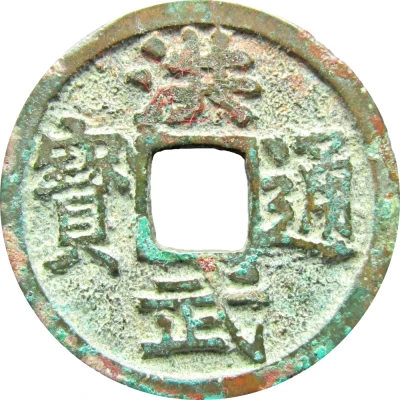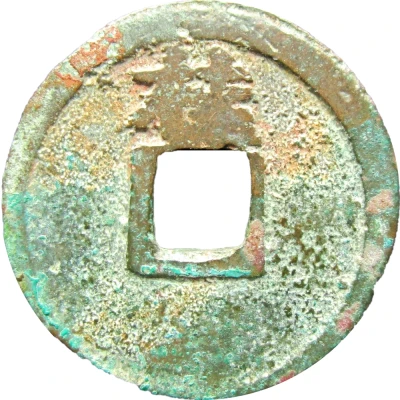1 Cash - Hongwu Tongbao; Gui; with Yi ND
| Bronze | - | 24 mm |
| Issuer | Empire of China |
|---|---|
| Emperor | Ming dynasty › Hongwu (明太祖) (1368-1398) |
| Type | Standard circulation coin |
| Years | 1368-1393 |
| Value | 1 Cash |
| Currency | Cash (621-1912) |
| Composition | Bronze |
| Diameter | 24 mm |
| Shape | Round with a square hole |
| Technique | Cast |
| Orientation | Medal alignment ↑↑ |
| Demonetized | Yes |
| Updated | 2024-10-03 |
| Numista | N#222070 |
|---|---|
| Rarity index | 100% |
Reverse
One Chinese ideogram above and one below.
Script: Chinese (traditional, regular script)
Lettering:
桂
一
Translation:
Gui / Yi
Guilin (mint) / 1 Cash
Edge
Plain
Comment
Guilin mint, Guangxi provinceCasting of Hongwu coins started in 1368, but was not continuous. Large coins were discontinued in 1371, with all minting being suspended from 1375 to 1376, then again from 1387 to 1389 (that time due to a copper shortage). Minting was finally stopped again in 1393 in favour of paper money.Interesting fact
One interesting fact about the Standard circulation coin 1 Cash - Hongwu (Tongbao; Gui; with Yi) ND (1368-1393) from Empire of China made of Bronze is that it was used as a form of currency during the Ming dynasty, which was the ruling dynasty of China from 1368 to 1644. The coin was first introduced by the Hongwu Emperor, who was the founder of the Ming dynasty, and it remained in circulation for over 200 years. The coin was made of bronze and had a round shape with a square hole in the center, which was a common design feature for coins during that time period. The coin was also known for its high quality and durability, which made it a reliable form of currency for the people of China.

